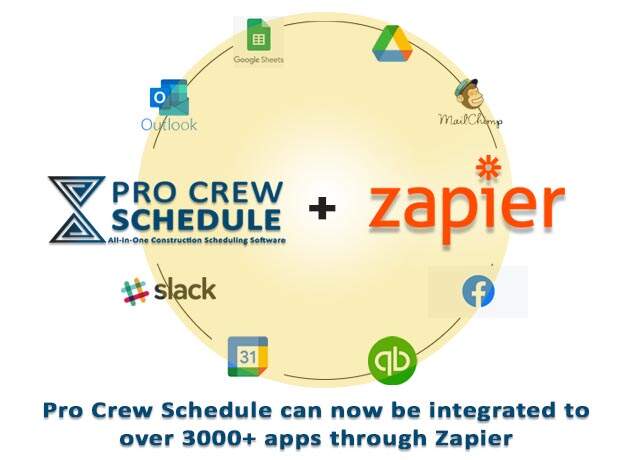Productivity has been quite a popular topic of discussion in construction, particularly over the past years. An increasing decline in construction productivity in the U.S. has become prevalent. According to BLS or Bureau of Labor Statistics, productivity in residential as well as public construction dropped more than 20% from 2015 to 2020. Commercial construction fared worse during that period, with a major drop of 30%.
And here’s another complication – construction productivity has always been hard to quantify. It constantly shows that productivity improvements are quite delayed and far behind other industries when it’s measured. So what are these issues stifling construction productivity growth? What is holding the construction industry back? And what can a business owner like you do about it?
Discover and learn thru this blog.
The Challenge of Quantifying Construction Productivity
The act of successfully quantifying productivity in the construction sector has always been a difficult one. The industry’s unique and complex characteristics make it harder for researchers to identify where productivity comes from, where it is lacking, and how to improve it. The following vital areas make up the majority of the challenge.
Measuring output
Measuring the construction sector’s output is quite a challenge all of its own. Unlike determining trucking routes or widget manufacturing, the construction elements constantly change from project to project. And according to BLS, productivity is hard to measure for construction industries because of the many challenges when measuring output and hours worked.
Deflating construction prices
To measure the industry’s productivity, you need consistent and reliable data to base present, past, and future costs off. Searching those deflators within construction is more challenging because it is a unique and complex industry. In fact, it is hard to develop real-time output price deflators to convert revenues into consistent dollar measures of output growth.
Subcontracting
How a typical construction project comes to fruition makes it harder to determine the actual costs of labor. Generally, the contractor subs out the job to specialty contractors or tradesmen. Rather than accounting for the labor hours directly, they are accounted for in material inputs. For that reason, BLS cannot quantify any of them.
Undocumented labor
Skilled undocumented labor makes up a huge portion of the construction workforce. According to various estimates, 13% of the construction labor is being performed by undocumented labor, even though the actual number is hard to nail down. As a result, it creates a significant challenge in determining construction productivity.
Labor Shortages
The construction sector is not attracting enough field and office talent to meet the growing demand. Are your workers aging out and retiring fast compared to your millennial workforce? Well, do not be surprised because that has become prevalent today. It is one of the reasons why the productivity rate has decreased over the years.
A Fragmented Industry
In the U.S., less than five percent of builders work for construction firms that employ over ten thousand workers. With that measure, the sector is five times more fragmented than manufacturing services, where 25% of the employees work for firms that hire over ten thousand workers.
This fragmented system results in an industry-wide lack of standardization that drops down productivity.
Lack of subcontractor scheduling software and other mobility tools
Despite significant investment in building construction tech in the past, there remains a gap in the latest mobile and cloud solutions. These software solutions can address the core requirements that can significantly drive productivity.
The many software applications today designed for project management do serve a purpose. These cutting-edge technologies drive a development mindset that delivers solutions that offer ease of use, seamless tracking and moving proactive and more intelligent decisions.
High cost of rework
The average cost of reworks as a percentage of the entire project cost for all construction types is five percent. Depending on the market conditions and construction type, that five percent may represent one project’s whole profit margin.
Untimely and poor communication and the lack of collaboration between parties involved during the first stage intensify the obstacle to productivity. One of the biggest culprits when it comes to lagging productivity is rework. One of the solutions to effectively solve this issue is constant communication.
Increasing communication will reduce backtracking and reworks.
Sure Fire Ways to Further Improve Construction Productivity
With a clear understanding of the construction industry’s struggles and why it is hard to place a finger on them, it is worth discovering and exploring how to improve it significantly. The following tips can provide the answers essential to not only boost your team’s productivity but also kick your industry’s economy into high gear.
1. Streamline the regulatory process
It is a well-known fact that one of the most highly regulated and structured industries in the country is construction. Building safety itself, life safety and environmental impact should not be taken lightly. Hence, regulatory agencies should exist to oversee construction projects. Yet, regulation often slows productivity, almost affecting output while extending hours worked.
Streamlining the approval and permitting process, possibly thru mobile apps and web-based portals can allow regulatory agencies to keep the project within schedule.
2. Simplify Contractual Processes
It must be no surprise that the work becomes faster and all-in-one whenever two parties work together towards a common goal. Hence, why do you approach contracting with such a hostile, me versus them attitude?
The construction industry must seriously consider moving toward a more collaborative, synergistic system focused on solving issues when managing construction projects, people, and overall business rather than undercutting the next bid. This particular attitude shift may lead to open communication – a strong indication of better quality construction projects, valued and fulfilled contractors, and happy project owners.
3. Supply Chain Management
One of the most significant issues the construction sector deals with is the constantly changing supply chain landscape. Fluctuations regarding material pricing, shipping costs, and availability can chew your company profits to the bone. Year after year, it remains a recurring issue.
Obviously, as a construction company, you have to diversify the supply chain and leverage your efforts to protect your profit. Yet, the supply chain moving towards digitalization allows for better inventory management in construction, allowing you to have the materials much faster, reducing hours worked while increasing output and productivity.
Lastly, not letting cash flow bog down your supply chain is another area worth considering.
4. Invest in Construction Technology
It should not surprise that one way to further improve productivity is to lean towards technology. The best software solution can limit the number of hours spent handling and working on simple tasks, allowing your construction crew to stretch their problem-solving muscles and enhance final output. This can lead to better productivity and fulfilled workers.
Technologies have a place in many areas in construction management:
- Smart contracts can automate payments, approvals, and other vital processes to speed up scheduling, payments, and more.
- New design technologies like BIM provide better accuracy and help lessen errors in the construction field.
- Real-time construction scheduling software improves crew management, monitoring, and other regular tasks.
- Software tools that can link the back-office and field can streamline changes and improve overall communication.
With various areas being at the advantage of automation, your crew can do and finish more essential tasks in a much faster and seamless way.
5. Improve access to project budget
Construction is a cash-hungry type of business. So it is quite impossible to keep productivity up while scraping the budget. In fact, the lack of cash flow is the primary reason why a construction company may fail. Without enough funds to spend on project materials, labor, and techs, productivity drops and takes output in it.
Fortunately, there is an increasing number of financial options that you can choose from. They are specifically tailored to your business and this industry.
Boost Construction Productivity with Subcontractor Scheduling Software
Project management tools are excellent, low-cost, and effective ways to increase your construction business’s overall productivity. These are software applications designed to solve the many challenges associated with managing your field teams. On top of that, they make it easier for your construction team to clock in or out – regardless of which jobsite they are on or how many sites they are traveling to within a day.
Pro Crew Schedule is a highly ranked project management software in the market. It helps you manage every area of your business. It would be best if you used this powerful software tool because it has many benefits:
- Managing and monitoring crew schedules
- Keeping all scheduling related tasks in one place
- Stay within your timeline and budget
- Real-time collaboration and communication
- Increase employee efficiency and construction productivity
- Crew, resource, and inventory management
- · Tracking construction inventory list
- Easy to Use and Accessibility
Get started with a 30-day free trial and discover more of what we offer!
Key Takeaways
The current rate of productivity growth in the construction industry may be falling dramatically behind compared to other sectors. But it can also be an opportunity for your construction company to lead within your markets. Because, after all, productivity is actually tied to profits, so well-planned improvements for productivity can give your construction business the competitive edge.







